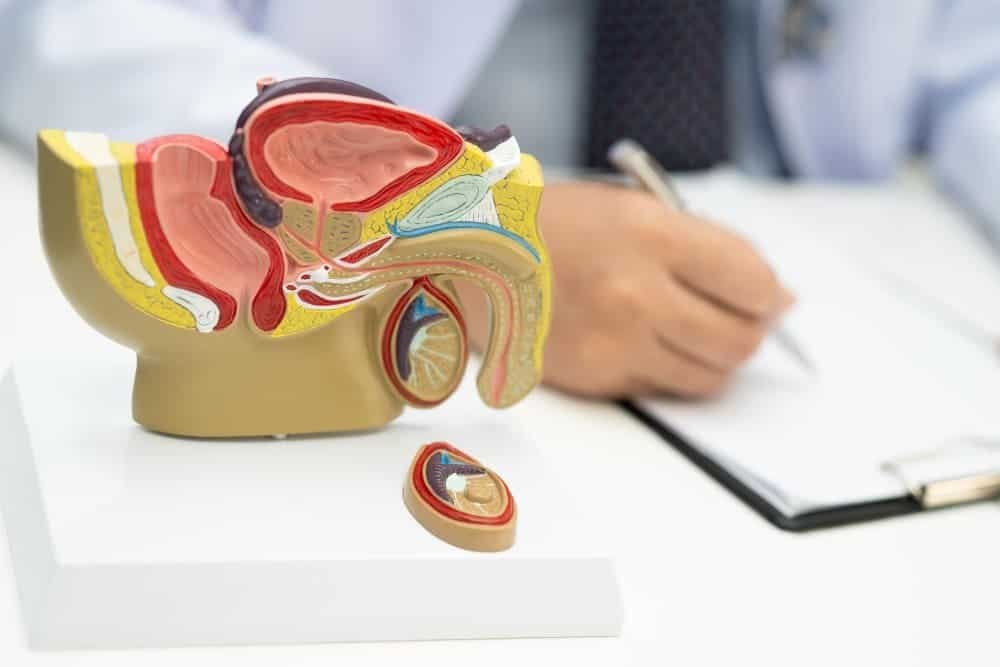Considering PAE but wondering if you’re a good fit? This guide clarifies exactly who is not a candidate for prostate artery embolization, helping you understand the key factors for a safe and successful outcome. 🤔

Is Prostate Artery Embolization Right for You?
Prostate Artery Embolization (PAE) has emerged as a leading minimally invasive treatment for benign prostatic hyperplasia (BPH), offering relief from frustrating urinary symptoms without the risks of traditional surgery. Many men are excellent candidates for this life-changing procedure. However, the PAE procedure is not a one-size-fits-all solution.
Safety and success are paramount. Therefore, a thorough evaluation by an expert interventional radiologist, like Dr. Samir Abdel Ghaffar, is a crucial first step. This ensures that the treatment is not only appropriate but also the best possible option for your specific health profile. So, who are the unsuitable candidates? Let’s explore the specific reasons why some patients may not be eligible for PAE.
The Primary Reasons a Patient May Be Ineligible for PAE
While many men with prostate enlargement are good candidates, certain medical conditions can make the PAE procedure unsafe or ineffective. An experienced interventional radiologist will carefully review your health history to identify any of these factors.
1. Confirmed or Suspected Prostate Cancer
This is the most important exclusion criterion. Prostate Artery Embolization is a highly effective treatment that treats benign (non-cancerous) enlargement of the prostate. It is not a treatment for prostate cancer.
- Myth vs. Truth: A common myth is that BPH can turn into cancer. The truth is they are separate conditions, but they can coexist.
- Why it Matters: The symptoms of BPH and early prostate cancer can be very similar (e.g., frequent urination, weak stream). It is absolutely essential to rule out a cancerous condition before proceeding with a treatment designed for BPH. Performing PAE on a patient with undiagnosed prostate cancer could delay a necessary and potentially life-saving cancer treatment.
- The Evaluation: Before being approved for PAE, every patient will undergo a thorough screening process, which typically includes a Prostate-Specific Antigen (PSA) blood test and a digital rectal exam. If there is any suspicion of cancer, a biopsy may be required for a definitive diagnosis.
2. Active or Recent Uncontrolled Infections
Having an active infection in the urinary system is a major contraindication for the PAE procedure.
- What this includes: This applies to active urinary tract infections (UTIs) or an acute infection of the prostate itself (prostatitis).
- Why it Matters: The PAE procedure involves inserting a catheter into the arterial system. If an uncontrolled infection is present, there is a risk of spreading bacteria into the bloodstream, which could lead to a more serious systemic infection (sepsis).
- The Solution: The good news is that this is usually a temporary barrier. Once the infection has been fully treated with antibiotics and resolved, the patient can often be reconsidered as a suitable candidate for PAE.
3. Severe Vascular Disease (Atherosclerosis)
The technical success of prostate artery embolization relies on the ability of the interventional radiologist to navigate a microcatheter through your arteries to reach the small vessels supplying the prostate. Severe vascular disease can make this impossible.
- What this means: Atherosclerosis is the hardening and narrowing of the arteries due to plaque buildup. If this condition is severe, it can create significant blockages or make the arteries overly twisted and difficult to navigate. This is sometimes associated with Peripheral Arterial Disease (PAD), a condition affecting blood vessels outside the heart.
- Why it Matters: If the prostate artery cannot be reached, the embolization cannot be performed. An attempt to force a catheter through severely diseased vessels could also increase the risk of complications.
- The Evaluation: An experienced interventional radiologist will often perform a CT angiogram before the procedure. This imaging test creates a detailed map of your arterial system, allowing the doctor to assess the pathway to the prostate and determine if it is safely accessible.
4. Significant Kidney Disease
This is a critical consideration related to the imaging required during the procedure.
- What this means: Patients with severe kidney disease or significantly impaired renal function are often not good candidates for PAE.
- Why it Matters: The PAE procedure is guided by real-time X-ray imaging (fluoroscopy), which requires the use of an iodine-based contrast dye injected into the bloodstream. This dye makes the arteries visible on the X-ray. The kidneys are responsible for filtering this dye out of the body. In a patient with poor kidney function, this process can put additional strain on the kidneys and potentially worsen the kidney disease.
- The Evaluation: A simple blood test to check your creatinine levels and estimate your glomerular filtration rate (eGFR) is a standard part of the pre-procedure workup. This test tells the doctor how well your kidneys are functioning.
5. Known Severe Allergy to Contrast Dye
An allergy to the essential tools of the procedure can make a patient ineligible.
- Why it Matters: As mentioned above, iodine-based contrast dye is essential for visualizing the artery during the embolization process. A patient with a known history of a severe, anaphylactic reaction to this dye cannot safely undergo the procedure.
- The Nuance: Mild allergies can sometimes be managed by pre-treating the patient with steroids and antihistamines. However, the decision rests entirely on the severity of the past reaction and the judgment of the medical team. Safety is the top priority.
Dispelling Myths: Who Might Still Be a Good Candidate? ✅

There are several misconceptions that cause men to mistakenly believe they are unsuitable candidates for PAE. Let’s separate myth from truth.
| Myth | Truth |
|---|---|
| “My prostate is too big.” | PAE is extremely effective for treating very large prostates. Unlike some forms of traditional surgery that become more difficult with larger glands, PAE is an excellent option for men with significant prostate enlargement. |
| “I am too old for any procedure.” | Age itself is not a barrier. In fact, PAE is often the preferred treatment for older patients who may have other health conditions that make them poor candidates for the rigors of invasive surgery. |
| “I’ve already had prostate surgery.” | While a previous procedure like a TURP can alter the vascular anatomy, it does not automatically disqualify you. An expert interventional radiologist can evaluate your specific situation to see if the prostate artery is still accessible for treatment. |
| “My BPH symptoms are not severe enough.” | If your BPH symptoms are affecting your lifestyle and quality of life, you deserve relief. You do not have to wait for symptoms to become severe to be considered a good candidate for PAE. |
The Decisive Step: A Consultation with an Expert
Ultimately, the only way to know for sure if you are a suitable candidate for prostate artery embolization is to have a comprehensive consultation with a specialist. Dr. Samir Abdel Ghaffar is a consultant interventional radiologist who specializes in evaluating and treating BPH with cutting-edge, minimally invasive techniques like PAE and echolaser.
During your consultation, he will:
- Review your complete medical history and urinary symptoms.
- Perform a physical exam.
- Analyze any necessary tests (blood work, imaging).
- Discuss all your treatment options with you.
- Provide an honest, expert opinion on whether the PAE procedure is the right choice for your health and lifestyle goals.
Don’t let uncertainty hold you back from finding relief. While there are clear reasons why some individuals are not candidates for PAE, many men who suffer from BPH are. Taking the step to get a professional evaluation is the definitive way to find out your best path forward. 💯
 العربية
العربية 
